In the intricate realm of music, there exists a sonic phenomenon known as DownTown Mystic—an entity that effortlessly weaves the threads of vintage nostalgia with a contemporary flair, creating a sound that is both timeless and uniquely modern. In an exclusive interview with Robert Allen (DownTown Mystic), the maestro behind this musical odyssey, we delve into the inspirations, techniques, and pivotal moments that have defined his journey. Picture a yin-yang of music, where the retro essence of the 60s and 70s converges with a modern twist, producing a symphony that resonates with the influences of rock legends like Tom Petty and Bruce Springsteen.
In this dialogue, DownTown Mystic unveils the secrets behind preserving the vintage sound while infusing modern elements, presenting a musical paradox that captures the essence of rock’n’roll. The artist’s passion for “old school” recording becomes palpable, resonating through guitars that echo the spirit of bygone eras. Collaborations with icons like Steve Holley, Paul Page, Garry Tallent, and Max Weinberg add layers to the DownTown Mystic sound, elevating it to new heights.
As we navigate the expansive landscape of DownTown Mystic’s discography, we explore career-defining moments, global recognition, and the delicate balance between the artistic and business facets of the music industry. The artist shares insights into the creation of the critically acclaimed “AmeriKarma” album, hinting at a new chapter with the upcoming release, “RnR 4 The Soul.” Join us as we unravel the layers of DownTown Mystic’s musical evolution, where the past, present, and future converge in a harmonious rock’n’roll symphony.
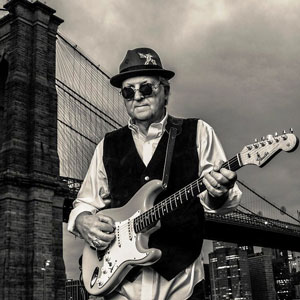
- Can you share the inspiration behind the unique sound of DownTown Mystic, described as “vintage yet modern,” and how it reflects the influence of rock legends like Tom Petty and Bruce Springsteen?
DownTown Mystic: I was looking for something that could mean the same thing as “retro” but with a twist like a yin-yang type of thing—vintage-modern. Retro signifies something older, but in fashion terms, is trendy for the times. Retro is always “in”, sometimes more so than at other times. My music is vintage sounding because I’m using sounds from the 60s and the 70s. I say it’s modern because if you compare my songs to the songs from those time periods, I don’t fit in. I think the only period where my music fits is right now. Regarding the influences of Petty and Springsteen, I’m in the same age group as them, so I have similar influences as them. I also listened to them for inspiration because I was a fan of their music. I tended to find Petty more to my style of RnR than Bruce, who is slightly older and has more R&B influences than I do.
- Your passion for “old school” recording is evident in your music. How do you balance preserving the vintage sound while incorporating modern elements to make it sound contemporary?
DownTown Mystic: If you listen to my music, it’s all about guitars. I will only add keyboards if the song really calls for it, otherwise it’s all guitars. Most of the guitars I use are vintage from the 60s and 70s, so the music can’t help but sound like that. Plus, I try keeping it rock’n’roll which is not the same as “rock”. Metal and harder edged rock doesn’t swing like RnR when done right. I’m not sure what modern elements are used. I think it’s more that I bring different styles together in ways that sound new. For instance, Day of Reckoning from the AmeriKarma album could have been straight bluegrass but I heard this Fleetwood Mac song Say You Love Me in my head and decided to fashion the groove based on that song, but I still felt it was missing something. Lindsay Buckingham played a banjo on the Mac track and when my engineer Joe DeMaio told me that Tony Trischka had recently done a session at the studio, I knew that I needed to have a banjo on the track. Now I know Tony is one of the best players in the world and having him play on the track is going to change things. When he goes into the double time thing on the final chorus it recalls Take It Easy by the Eagles. So you have Eagles crossing with Fleetwood Mac on a song of mine, which doesn’t sound like either. It sounds new…vintage yet modern. lol
- Having been part of the music scene for several years, what do you believe sets DownTown Mystic apart from other artists in the rock genre, both in terms of style and substance?
DownTown Mystic: I try to stay true to RnR because I know it. The truth is I decided I was going to create what I wanted to hear. I didn’t care what other people were doing. I wanted to make my contribution to the music that inspired me. I can’t tell you how many great records impacted my life and this was my time to give back. I think I’m unique in how I sound because of all those great records I heard. Now I’m trying to make great records. Great records have their own sound and vibe. I strive to consistently hit that mark. Even if I don’t, the effort of trying to reach that level will raise the level of my work. That’s what separates me from the rest. I found my own space and made it all mine. You might not like the song, but you’ll hear the quality come through. Sometimes it’s “he shoots he scores”!! Sometimes it’s “ooh, that was sooo close”! lol
- Your first release, ‘Standing Still’, received critical acclaim overseas. How did this early success shape your approach to subsequent albums?
DownTown Mystic: When that album landed on the Euro Americana Top 25 Chart I felt like I was finally on the musical map somewhere. RnR is Americana and it made me feel like I could belong there. I was into country rock and my influences came from The Byrds, Buffalo Springfield and Poco. Not straight country and not straight rock. There’s acoustic music with harmonies. Add to that The Beatles and their influences of The Everly Brothers and Buddy Holly. I can use all of that in my music and that’s where I decided to go with it. I wanted to tour in Europe so I got a licensing deal with an indie German label. They put out the Standing Still cd to great reviews but then reneged on everything they told me they were going to do when I signed with them. The good news was that Radio in Europe was playing me and I went my own way with it. Ironically, the main reason I did the 2nd album was because I owed the German label another album. When I told them it was finished, they gave me a hard time about putting it out and that pushed me to get released from the contract. Then I put it out on my own label Sha-La Music, signing a worldwide distribution deal with The Orchard. I haven’t looked back. It was the best move I ever made!
- The DownTown Mystic brand has grown not just through music but also through licensing deals. How do you balance the artistic aspect of your work with the business side, particularly in the realm of licensing?
DownTown Mystic: I had no idea what sync-licensing was about when I first encountered it around 2009. Now I’ve become one of the top sync-licensed indie artists with over 240 TV shows and films to my credit. The way I look at it, I do my artistic thing by writing, recording and releasing my music as DownTown Mystic. I promote my releases through my own label and once the project runs its course, then I look to sync-license it. I’ve done my artistic thing and now I let the business take over. The music supervisors want songs that are radio-ready, meaning they have airplay quality. I get a fair amount of radio airplay around the world. Radio wants a story. I get a fair amount of my songs sync-licensed because they’re radio-ready and get airplay. The artistic and business sides collide and work well together.
- The lineup of musicians on your albums is impressive, featuring legends like Steve Holley, Paul Page, Garry Tallent, and Max Weinberg. How did these collaborations come about, and what do these accomplished musicians bring to the DownTown Mystic sound?
DownTown Mystic: I’ve told how I met these guys quite a few times but not who they are. For instance, Steve Holley was asleep at his hotel in Japan when he awoke to a frantic call from Linda McCartney that Paul had been arrested! He would be the last drummer to play in Wings because Paul disbanded the band when he got out of the Japanese jail. If you see the video of McCartney’s Rockestra Theme, Steve’s the guy playing the 2nd drum kit next to John Bonham. Are you kidding me? I’m playing with that guy?? When we were recording the basic track for The Wish, which I wrote as up-tempo, Steve said he heard it in half-time like Pearl Jam meets Neil Young. So, we tried it like that, and after running it down a couple of times, it was obvious that was the way to go with it. He changed the whole vibe of the song.
And then there’s this ball of energy named Paul Page on bass. The minute he walks in you can just feel the energetic vibes coming off him. He’s a definite boost! Plus, he’s played with Dion, who is probably the only rock’n’roller that got me through the early 60s before The Beatles hit. Dion was on that last bus with Buddy Holly, Ritchie Valens and The Big Bopper! Paul tells me that most of Dion’s stuff is a shuffle. This is right before we record the basic track for Maybe Love’s A Crime, which is a Dion-shuffle type of song. Steve takes out his brushes and we’re off. It’s the only track that we cut in 1 take! Yes, I know, it’s not on AmeriKarma. It would have gotten lost on the album and it was too good for that.
Garry Tallent and Max Weinberg play with Bruce Springsteen. You can’t get any bigger than that, especially if you live in New Jersey. What I didn’t know at the time I worked with them was that besides working with Bruce, they had only played together with a handful of artists, of which I’m one of them. They each have played on tons of sessions but only a few together as the E Street rhythm section. Only Ian Hunter and yours truly have recorded with both Steve & Paul and Garry & Max. How cool is that? We were cutting Way To Know and Garry says to Max “play like Charley Watts” and they locked right in. That’s my only song that’s made it to #1 on charts in the US and Europe. 😊

- “AmeriKarma” has been described as a career-defining album. Can you take us behind the scenes and share the creative process and inspiration that went into crafting this particular record?
I sold my house and moved during the pandemic, so for a few months my stuff was in storage. When I was in my new house, I set up my computer and was checking out my iTunes library. I had recorded some tracks for sync-licensing purposes and had started to write lyrics for a couple of them. Before I moved, I recorded vocals for the songs Live and Shadow Walk. Now hearing them for the first time in a while, I decided to release them as part of The DownTown Demos, with the idea of showing what they would sound like going from demo to the final studio recording. That’s all I had for an idea of an album going into the studio to record the songs that would become AmeriKarma.
I sent the demos of the songs to Steve Holley and Paul Page beforehand so they could do their thing prior to the studio. Steve and Paul were excited about this group of songs in a way I had not seen before. I think it was their interest that made me start to listen to them differently. A week before my birthday we were in Shorefire Studios in West Long Branch, NJ, about a half hour from my new home. It was the first time I’d been in this studio since I worked there with Garry and Max when Garry co-owned it. Steve and Paul brought their energy to the songs and we just went for it. We cut 10 tracks in 2 days.
I had no timetable for anything. I started to overdub guitars and cut vocals. Keyboard wiz Jeff Levine came in one day to record piano and organ on a few songs and Steve came back for a day to sing some harmonies and add some percussion. I asked him to cut a new song I wanted to do, so he played drums with me on acoustic guitar, and we cut the track. It was all very loose but focused at the same time. I would come to the studio a couple of times a week. By March I was starting to mix and the first song to be completed was Fly. I had not been a big fan of the song until I cut the vocals with Steve. By the time I was mixing it I was loving the song. That never happened before. When I finished the final mix I knew I had to release it as a single. I released Fly in May without mastering it. That’s how good it sounded to me and the response at Radio was immediate. Then the album started to fall into place. I was listening to the breakdown after the chorus on Superstar and got visions of Elton John getting up from his piano to strut across the stage. I thought, “what would Elton do”? I told Jeff to play piano like Elton would on the track, think Saturday’s All right For Fighting. That’s why I called it the To Sir Elton With Love Mix and made it the next single. This time it was mastered by Leon Zervos (a big-time mastering engineer who mastered AmeriKarma) at Studios 301 in Australia. I was stuck on Day of Reckoning until Joe DeMaio hooked me up with Tony Trischka. Things just seemed to fall into place. Maybe it was because I took my time to let things happen. I was doing 30-40 mixes per song! There was just something different about the whole project.
- AmeriKarma follows the release of ‘21st Century Rock’n Roll’ in 2022 and ‘DownTown Mystic On E Street Deluxe’ in 2021. How do you see AmeriKarma fitting into the narrative of these previous albums, and what makes it a standout in your discography?
DownTown Mystic: The day I released 21st Century RnR was the first day of recording AmeriKarma at Shorefire Studios. I knew I was about to record songs that were different from what came before. I released 21st Century RnR because I felt like a chapter was ending, like a greatest hits album usually does. I wanted to make a RnR statement, and this was going to be it. All my rockers in one album. All killer no filler! Here’s my idea of RnR, any takers? With AmeriKarma it felt like a new direction or chapter was starting. I can’t really explain it because it was all intuitive. I just knew this was going to be different from what I had done before. I think the reason it stands out is because of time and space. The right time and right space for this music. People were suddenly hearing what I was doing. Like you release music and nobody really gets it. What’s that?? Then one day you release music and people get it. What’s that!? Same words but one is clueless, “huh I don’t get it”?? The other is tuned in, “cool play it again”! Right time and space. I went from 500,000 streams to 3.2 million streams in just a year. That would be the very definition of a “hit” in the old days. Is it now? Probably not but more people are definitely listening. 😊
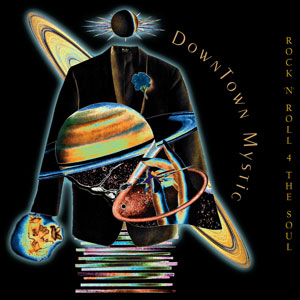
- Your upcoming album, ‘RnR 4 The Soul,’ is highly anticipated. Can you provide a sneak peek into the themes and inspirations behind this project?
DownTown Mystic: Oddly enough, in December I did a catalog release for 21st Century RnR on PlayMPE, which is a digital download platform for Radio. The response has been a pleasant surprise with stations playing it around the world. It got me to thinking about what to release next. I had 4 songs left over from the AmeriKarma sessions and I was going to release one as a single. But the reaction at Radio to 21st Century RnR made me think about releasing an album that kind of went back to how DownTown Mystic started. There’s a new audience that has discovered me. Let them hear what it’s been about. Because of how Streaming places an emphasis on new releases, I needed to do just that. I’ve got the catalog for it so why not release a different version of 21st Century RnR? I included 3 songs from that release because they’re vital to RnR 4 The Soul. I think the album has some of my best material on it and is built around the 6 core songs that the project was created on, well before it was called DownTown Mystic. I’m writing an epic 3-part post on the DownTown Blog that will go into the story of each song on the album. These 6 songs are a key for me because I had no idea what would happen once I recorded them. I was producing modern rockers The Discontent and working in the studio with them made me want to record my music again. It was just an experiment to see what these young guns would do with my songs. The rest, as they say, is history. 😊
Because of scheduling with my digital distributor, The Orchard, the earliest date I could get to release RnR 4 The Soul was February 9, which as it turns out, is the same day in 1964 when The Beatles first played the Ed Sullivan Show and changed the course of musical history forever. 60 years later, after watching that show as kid who didn’t even play guitar, I have my album being released. What are the odds?? One of the songs that didn’t make the album was Eyes of The World, but I decided to re-mix it with Joe DeMaio at Shorefire. I was so happy with the result that I released it as the single for the album. It was just released to Radio but won’t be available at Streaming until February 23 because of scheduling issues.
- How do you envision the future of DownTown Mystic’s music evolving, especially considering the dynamic and ever-changing landscape of the music industry?
DownTown Mystic: As I’ve said, I feel that I’m in a new chapter with my music. I’m still retro and that’s not going to change. What I think is evolving are the styles and influences that I’m bringing to the music in my production of it. There are combinations of things that you wouldn’t think of on hearing them and I think that’s creating something new. What’s interesting about the musical landscape is that I think it’s coming my way. I’m seeing myself being reflected out there in ways I hadn’t before, and I think it’s because RocknRoll is back in the lexicon.
- Beyond the success of your albums and chart performances, how do you measure personal and artistic growth as an artist?
DownTown Mystic: My motto has always been “success is how you define it”. What do you define as success for yourself and not what others say? It could be something small like “I mailed my cd to a radio station today”. There are loads of success in that simple act. 1st—you made a cd which means you had to write songs and record them. 2nd—Then you had to get the artwork together to create the cd. 3rd—Then you had to get the cds manufactured. That’s a lot of work! Pat yourself on the back every step of the way because you’ll be reinforcing success in your life and that gives you confidence. If you don’t have confidence, then you won’t have success in anything.
- DownTown Mystic has been featured on influential radio stations like KROQ in LA. Can you share more about the pivotal moments and experiences that led to your music gaining national airplay and recognition?
DownTown Mystic: Getting any kind of airplay is always a strange experience for me. I mean, hearing your song on the radio is always very cool, that doesn’t change. I grew up listening to the radio all the time and you knew if you heard a song, everybody you knew heard that song on that station. That’s gone now. So it’s a bit of an abstraction to me. Even being told that you were played on KROQ doesn’t sink in right away, you know? What does sink in is that your music was good enough to get played on the radio and that definitely boosts your confidence.
The one story I can share is when I heard myself on the radio for the 1st time. It was back in the 70s and in NYC the big station was WNEW-FM. My band had just released a 45-single of Chuck Berry’s Sweet Little 16 and one night it got played on the station. My band was called The Tupelos and the DJ that night was a newbie who would fill in where they needed him. The DJ’s name was Vin Scelsa, who would become a legendary DJ in NYC. Vin plays our single and because our name was The Tupelos, he wants to play Tupelo Honey by Van Morrison. I guess he couldn’t find it because after a short pause, he flips our record over and plays the other side which is my song! I went bonkers! Then when my song stopped, Vin played Tupelo Honey. The next day we heard from all our friends that they had heard our single played! 😊
- Your music has been played in 44 countries on over 5000 stations. How has the global reception of your work influenced your approach to creating music with universal appeal.
DownTown Mystic: As I said earlier, I make music for myself. I don’t think about who’s listening. I have the confidence to know when I release something at Radio, it will get played. When you have that many stations that can play your music, I just leave it in their hands. As long as I make the music I want, to the best of my ability, I know I can release it and it will find an audience. I don’t think about it past that because the stations and the listeners will probably hear it differently than I do, and that’s fine with me.
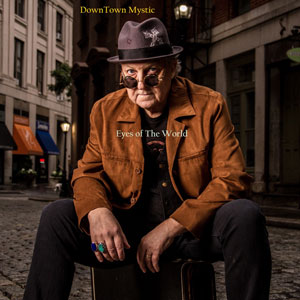
- The DownTown Mystic brand has also expanded beyond music into the realms of TV shows and films. Are there any particular shows or movies where you felt the synergy between your music and the visual storytelling was especially powerful?
DownTown Mystic: 2023 started out with No Exceptions getting placed on the TV show 911:Lonestar starring Rob Lowe. That was before AmeriKarma was released. I felt that this was a very good omen! What was even better was that I knew in advance when the show would air with my song, which rarely ever happens. So I was able to tell my friends and family when to watch the show. About halfway through the show, the scene shifts to Rob Lowe arriving at a biker bar on his motorcycle and as soon as we see him, my song starts playing. Rob gets off his bike and walks into the bar and now my song continues to play in the background but now it sounds like it’s playing on the jukebox in the bar. This is very cool!! Generally, a sync will last from 30-40 seconds in a show but my song plays for 2 minutes! That’s huge!! But the really cool part is my lyrics fit the storyline perfectly. Rob’s character is in the biker bar to try and plant a listening device for the FBI because they think the bikers are nazis. Rob gets off his bike and my vocal starts “the road to hell is paved with good intentions”!!
No Exceptions is the last track on AmeriKarma and is this big bluesy rocking jam. It was perfectly placed in the scene on the show. Also, it impressed my family and friends, who could not believe that was my song, and now know what I do. lol
- After so many years of working in the industry, do you feel that your music has given you back just as much as you have put into it, or were you expecting something more, or different?
DownTown Mystic: It’s given me back so much more than I could have imagined. Especially at this time in my life. In many ways I’m living my dream. It might not be how I thought it might be, but in reality, I think it’s much better and I’m truly grateful for it. The way I’ve come to think of it, after all the rejection in my 20s and 30s, is that I was creating the music for my future self. There is no way I could write all that music now. The universe works in strange ways and I’m living proof of it! 😊
- Putting aside the accolades or criticisms that fans or the media may afford your releases, what’s the one thing about Downtown Mystic or your music, you think people may overlook or misinterpret most often?
DownTown Mystic: I’m not sure if they misinterpret it. I think people get it the way I mean it. I think it’s straightforward enough. What I find interesting is the way people hear my music. For example, someone will say they heard my music on Spotify and then tell me an artist or band it reminds them of. Usually, I don’t get their reference and have to think about it. All that really matters is that they get it the way they want. It’s all good. 😊
- What drives you day after day, more than anything else, to continue pursuing your musical career?
DownTown Mystic: I don’t think it’s any one thing that drives me. It’s everything. New songs to write or record, new releases to promote, new ideas for new releases. The fact that I have a career doing what I love to do drives me. I live it 24/7 and it’s what gets me up every day.
- As an artist with a rich history in the industry, how do you see the current state of rock music, and what role do you believe DownTown Mystic plays in preserving and evolving the genre?
DownTown Mystic: I don’t know where rock music is at this moment. I’m not sure anyone knows but I’m probably not the person to ask. I started releasing my music because I wanted to show that RnR still existed and bring it into the 21st century. I wanted to release my version of it. It didn’t matter to me if I didn’t fit in anywhere because I wasn’t trying to. There was a time when you kind of knew where things stood. I think the record labels played a big part in creating the music scene that existed for years across all styles of music. As a listener you could hear where the standard was, and I think that’s been lost. I recently spoke to a college class of music business majors and asked them if there was anything like that today and they all said no. I think it’s very hard for rockers these days. How’s the club scene after covid? Do kids still get together to form bands? Who will be playing this music in 20-30 years? Probably only The Stones…LOL

- As an artist who has successfully navigated a career over several decades, how do you approach staying true to your musical roots while also staying relevant and innovative in the ever-changing landscape of the music industry?
DownTown Mystic: For me it’s always been about the music and as long as I stayed true to it, then it would eventually find its place. The real secret is caring about what you do. I try to be authentic in everything I do. If you don’t believe in what you’re doing, then who will? The audience can hear it in your voice. As far as being relevant, I don’t try to be. As I said before, I’m retro and that’s what I do. For a long time, I didn’t see my music reflected anywhere and now I do. I think that’s called persistence. lol
- The DownTown Mystic brand has developed through various stages of your career. How do you envision the future of DownTown Mystic, and what goals do you still have for the project in the coming years?
DownTown Mystic: I think I opened a new chapter with the AmeriKarma album and I’ll probably continue in that direction. I hope to continue to evolve in my production work. Maybe work with other artists in that capacity. From a business standpoint, I would like to develop my publishing catalog to see if I can interest other artists in recording my songs. I can offer songs that have proven track records. Most of them have been played at Radio but would be considered new to most audiences. There are quite a few established artists who I think could benefit from covering one of my songs. I just saw Cyndi Lauper and forgot how great she is and that she’s still doing it. And You Know Why, which is on RnR 4 The Soul, would be perfect for her voice. I’ve always thought that Nashville would become a place for the rebirth of RnR and I’ve got a music rep there to help promote my catalog. Also, sync-licensing continues to be an area of interest. Maybe get involved in soundtrack work. I’m open to anything. 😊
OFFICIAL LINKS:
X: @DTMysticband
DownTown Mystic Website: http://downtownmystic.net/
DownTown Mystic YouTube Channel: @DownTown Mystic1
FaceBook: https://www.facebook.com/DTMystic
Instagram: https://www.instagram.com/downtownmystic33
Spotify: https://play.spotify.com/artist/19VD3b7cxZuylUNNUP9sdm
Apple Music: https://music.apple.com/us/artist/downtown-mystic/154002420
Amazon Music: https://music.amazon.com/artists/B0013RQ2AG/downtown-mystic
AirPlay Direct: http://www.airplaydirect.com/DownTownMystic/




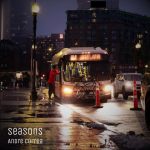

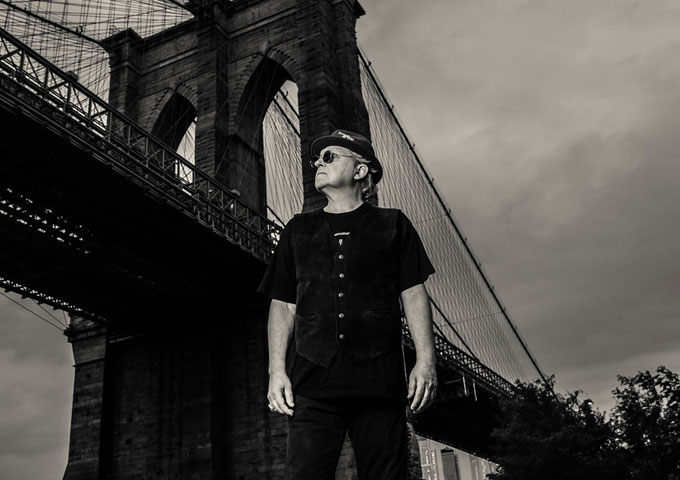



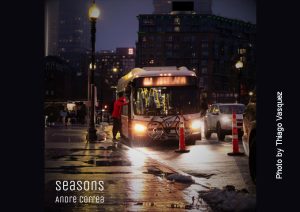
More Stories
The Cosmic Factory on 15 Years of Psychedelic Alchemy and the Making of ‘Lab Grown’
Detroit Soul, Modern R&B Elegance: An Interview with Reggie Braxton
From Boone to Beijing to Back Home: Ty Bru Talks Legacy, Loyalty, and ‘I Said It’s Great’